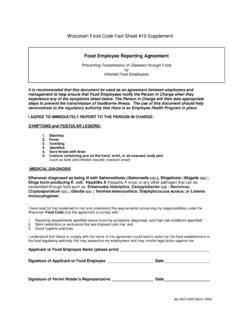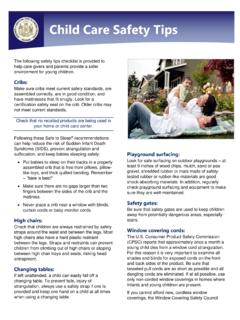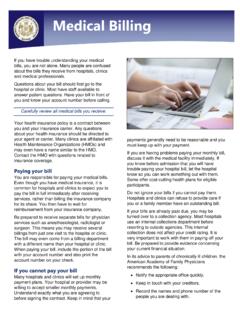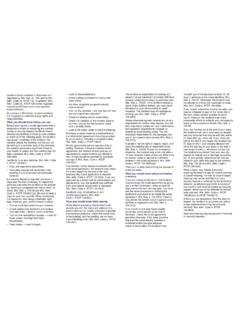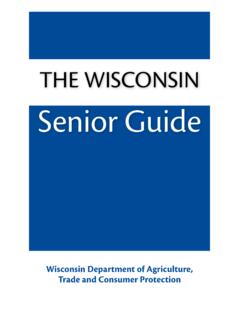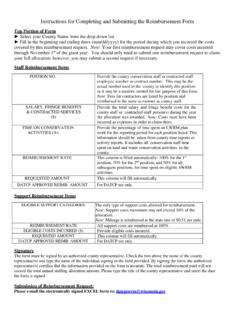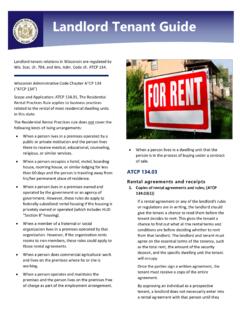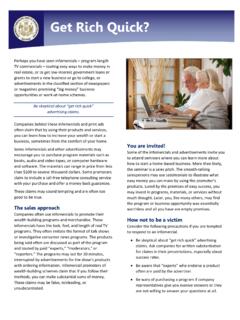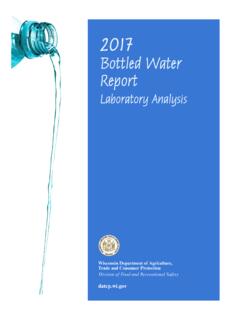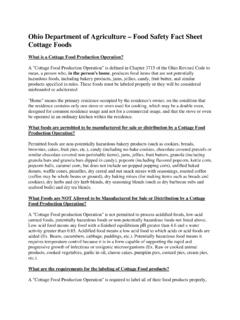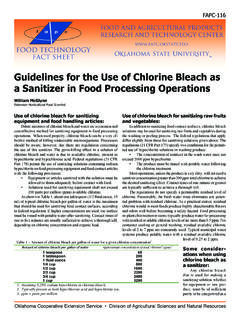Transcription of Wisconsin Food Code Fact Sheet - datcp.wi.gov
1 Wisconsin Department of Agriculture, Trade and Consumer Protection Division of food and Recreational safety 2811 Agriculture Dr., Box 8911, Madison, WI 53708 dfrs_fs_070 (09/2018) Wisconsin food Code fact Sheet No Bare Hand Contact with Ready-to-Eat Foods Cross contamination between ready-to-eat food and unwashed or poorly washed hands causes foodborne illnesses. You can avoid contaminating food by providing a barrier between your hands and the food . What are ready-to-eat foods? Ready-to-eat foods are foods consumed without further washing or cooking. Examples of ready-to eat foods include the following: Prepared fresh fruits and vegetables served raw Salads and salad ingredients Cold meats and sandwiches Shredded cheese Bread, toast, rolls, and baked goods Garnishes such as lettuce, parsley, lemon,wedges, potato chips, and pickles Fruit or vegetables for mixed drinks duringpreparation activities Ice Any food that will not be thoroughly cooked orreheated after it is preparedWhat can I use to prevent cross contamination?
2 You can prevent cross contamination by using single-use gloves, deli paper, tongs, spatulas, and other utensils. You should also follow proper handwashing. Hands must still be washed in addition to using gloves, deli paper, or utensils. Hand sanitizers are not intended to replace handwashing. When is bare hand contact allowed? Bare hand contact is allowed when washing raw fruits and vegetables. However, you should still use gloves to reduce the risk of a viral foodborne illness transmission. You should also minimize bare hand contact with exposed food that is not ready-to-eat. Bare hand contact with ready-to-eat foods requires prior approval of a written plan from the regulatory authority. Regulatory authority means the local, state, or federal enforcement body or authorized representative having jurisdiction over the food establishment.
3 Specific procedures, policies, and documentation per Wis. Admin. Code ATCP 75 Appendix Part (D) must be submitted. Where can I find more information? More information about the Wisconsin food Code can be found online through the following: fact sheets: Wisconsin State Legislature.
